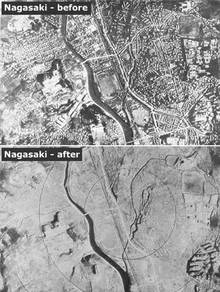 |
|
|
The aftermathIn August 1945 nuclear bombs were dropped on the Japanese cities of Hiroshima and Nagasaki. Many thousands were killed instantly and many more died of Radiation sickness and other long term disorders such as thyroid cancer and leukaemia. The exact number of dead and injured may never be known but estimates range at between 100,000 and 180,000 for Hiroshima and between 50,000 and 100,000 for Nagasaki. The use of such terrible weapons in war time is linked to other fundamental ethical questions about war:
It is this last question that concerns us here. Focussing on how wars are conducted rather than if they should be, has led to the creation of international codes such as the Hague and Geneva conventions and guidelines on what constitutes a war crime.
Read comments
PL
08-04-08 18:15
This is a good page to get two sentences from. But I have to get at least two pages of information. This did not help. Revise this page
paul
02-07-09 13:32
i disagree i thought it was most informative
Alexandra
31-08-10 08:28
I am currently learning about the Manhattan Project in Year 12 physics, and believe that this is an important area to include so that future generations can learn of these mistakes. I visited Japan a few years ago and was horrified by the effects of this 'project' and I hope that by educating students about these events we can prevent similar disastrous events from occuring.
|



 Where are the nuclear weapons now?
Where are the nuclear weapons now?
What's your opinion?
Average rating




Current rating: 4/5 (from 1 votes cast)